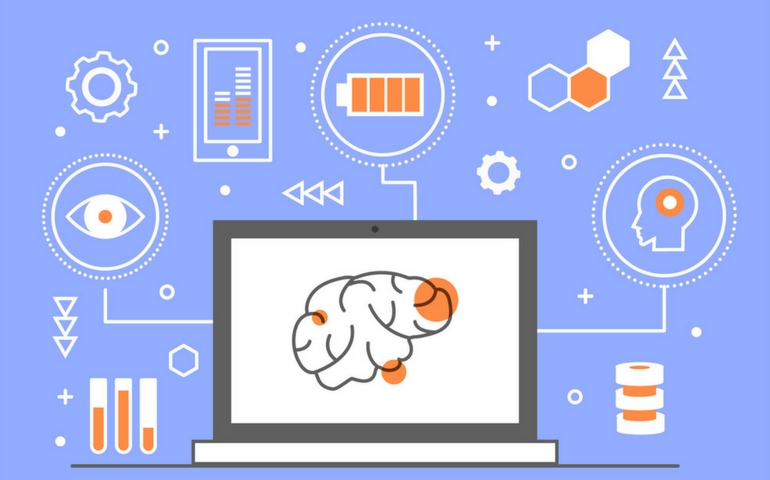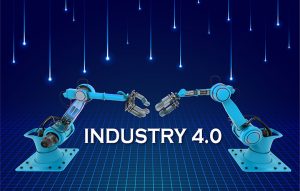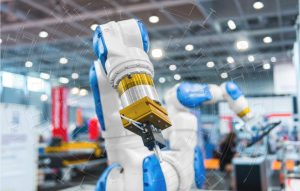The Internet of Things is the go-to technology that businesses hinge on to get valuable business insights. And, what powers IoT? Big Data. In the end, it all comes down to the data that is collected using connected devices and sensors.
According to Cisco, data created by the Internet of Things will hit 507.5 zettabytes by 2019.
In the coming years, we will be over flooded with data, to the point where zettabytes would be the new normal. But, the power of data comes with its challenges. As the data grows in size and considering the speed at which it is collected; storing, processing, and analyzing that data already seems to be a major concern.

How Industry 4.0 is a game changer for factory owners
Webinar agenda
- How Industry 4.0 is a game changer
- The role of IoT and data analytics in the manufacturing industry
- IT/OT Convergence: Why it’s important for IoT adoption
- Current market trends and value
- Smart factory: The evolution not revolution
- Demo and review of smart production line monitoring
- Q&A session
To get the analytics out of data, first of all, businesses need a robust infrastructure to ensure that everything is up and running, devices are online and are communicating well. Now, let’s take a look at our existing infrastructure, is it capable of transferring this huge amount of data to data lakes and processing hubs to process? On top of that, the load will be continuously mounting day by day, further stretching the limits of your infrastructure.
A new approach that can address these growing issues is edge analytics.
What is edge analytics?
Edge analytics pushes the communication capabilities, processing power, and the intelligence of the edge gateways directly into devices such as programmable automation controllers (PACs). In edge computing, tools and assets are physically connected to a control system that automates these assets using PAC. Further, these PACs that are enabled with edge computing capabilities to analyze whether the data from the assets should be passed to the cloud or should be stored locally.
Edge analytics is basically a way to optimize cloud computing systems by conducting analytics and data processing at the edge, i.e. near the source of data. And, in most of the scenarios, the edge is where the actions are to be taken based on the analyzed data in order to enhance the performance; moving the analytics to the edge will eliminate the extra steps involved with moving and processing the data in the centralized system and thus reducing network pressure.
An alternative approach that can also solve the issues associated with increasing load can be fog computing. Fog computing insists on pushing the intelligence to the LAN (local area network) level and then process the data there using an IoT gateway. However, its architecture relies on a list of links in the communication chain to pass the data from assets and machines to the digital world. In fog computing, each link is a potential point of failure, so more the number of links in the entire communication chain, more the chances of failure. This is not the case for edge computing, it significantly reduces the chance of failure. Currently, there are several market leaders such as Intel, Cisco, and Dell that are offering IoT gateways to get started with edge computing and get valuable insights and analytics capabilities right at the edge.
Is edge computing going to replace cloud computing?
Edge computing is not here to replace cloud computing, it’s just about using a blend of both the approaches to get a strategy that works best for you. The right fit might be the incorporation of both the models: using edge computing for processes for which time is the crux, and using cloud computing for scenarios with a bulk of data and data security concerns.
Why edge analytics? How can it enhance your production line?
Any IoT infrastructure comprises of three main components: devices, server, and network edge. In edge computing, we aim to process the data near the devices in order to get instantaneous analysis and prompt decision making. This is expressly true for devices that make use of machine learning algorithms to make autonomous decisions, which only requires them to send the processed data to the centralized system. This not only makes the whole process faster, it saves a tremendous amount on data transmission costs.
Taking an example of an IoT-enabled production line, with smart sensors installed at several points, edge devices on the production line will collect data in real-time. This information is further utilized by the devices themselves to derive analysis that can help in preventing machine downtime, reroute overload, or optimize the machine productivity.
Some of the benefits of using edge analytics at the production line in a smart factory:
- Improve overall equipment efficiency (OEE) in real-time
- Detect anomalies
- Reduce data security risks by storing the data on-premises
- Abolish unresolved interruptions in the production process
- Detect anomalies in the operations based on the previous machine behavioral patterns
- Remote and preventive maintenance
The bottom line
Moving the analytics to the edge can transform the way data is collected, processed, and utilized by the devices in a smart factory. According to a Cisco/SCM World survey, manufacturers projected a 48% reduction in unplanned downtime by tapping into edge analytics. This clearly shows that edge analytics is going to substitute the gut-level decision making with empirically driven intelligence.









